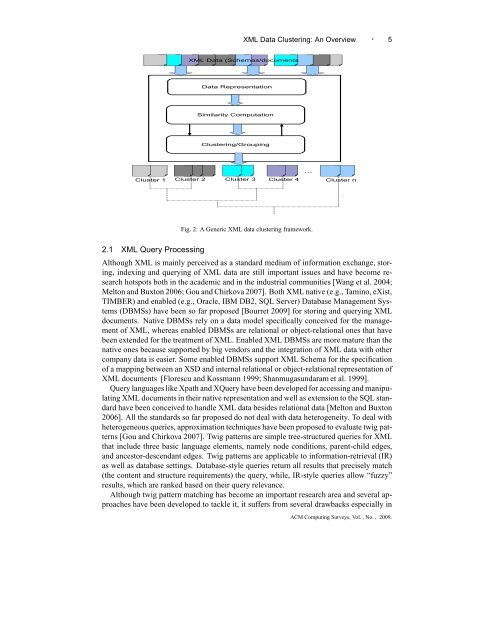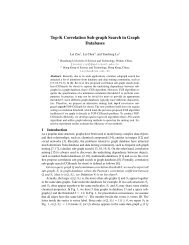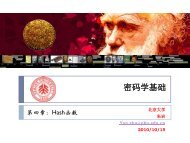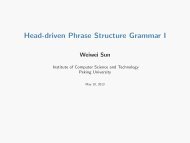PDF (1MB) - QUT ePrints
PDF (1MB) - QUT ePrints
PDF (1MB) - QUT ePrints
Create successful ePaper yourself
Turn your PDF publications into a flip-book with our unique Google optimized e-Paper software.
XML Data Clustering: An Overview · 5<br />
Fig. 2: A Generic XML data clustering framework.<br />
2.1 XML Query Processing<br />
Although XML is mainly perceived as a standard medium of information exchange, storing,<br />
indexing and querying of XML data are still important issues and have become research<br />
hotspots both in the academic and in the industrial communities [Wang et al. 2004;<br />
Melton and Buxton 2006; Gou and Chirkova 2007]. Both XML native (e.g., Tamino, eXist,<br />
TIMBER) and enabled (e.g., Oracle, IBM DB2, SQL Server) Database Management Systems<br />
(DBMSs) have been so far proposed [Bourret 2009] for storing and querying XML<br />
documents. Native DBMSs rely on a data model specifically conceived for the management<br />
of XML, whereas enabled DBMSs are relational or object-relational ones that have<br />
been extended for the treatment of XML. Enabled XML DBMSs are more mature than the<br />
native ones because supported by big vendors and the integration of XML data with other<br />
company data is easier. Some enabled DBMSs support XML Schema for the specification<br />
of a mapping between an XSD and internal relational or object-relational representation of<br />
XML documents [Florescu and Kossmann 1999; Shanmugasundaram et al. 1999].<br />
Query languages like Xpath and XQuery have been developed for accessing and manipulating<br />
XML documents in their native representation and well as extension to the SQL standard<br />
have been conceived to handle XML data besides relational data [Melton and Buxton<br />
2006]. All the standards so far proposed do not deal with data heterogeneity. To deal with<br />
heterogeneous queries, approximation techniques have been proposed to evaluate twig patterns<br />
[Gou and Chirkova 2007]. Twig patterns are simple tree-structured queries for XML<br />
that include three basic language elements, namely node conditions, parent-child edges,<br />
and ancestor-descendant edges. Twig patterns are applicable to information-retrieval (IR)<br />
as well as database settings. Database-style queries return all results that precisely match<br />
(the content and structure requirements) the query, while, IR-style queries allow “fuzzy”<br />
results, which are ranked based on their query relevance.<br />
Although twig pattern matching has become an important research area and several approaches<br />
have been developed to tackle it, it suffers from several drawbacks especially in<br />
ACM Computing Surveys, Vol. , No. , 2009.












